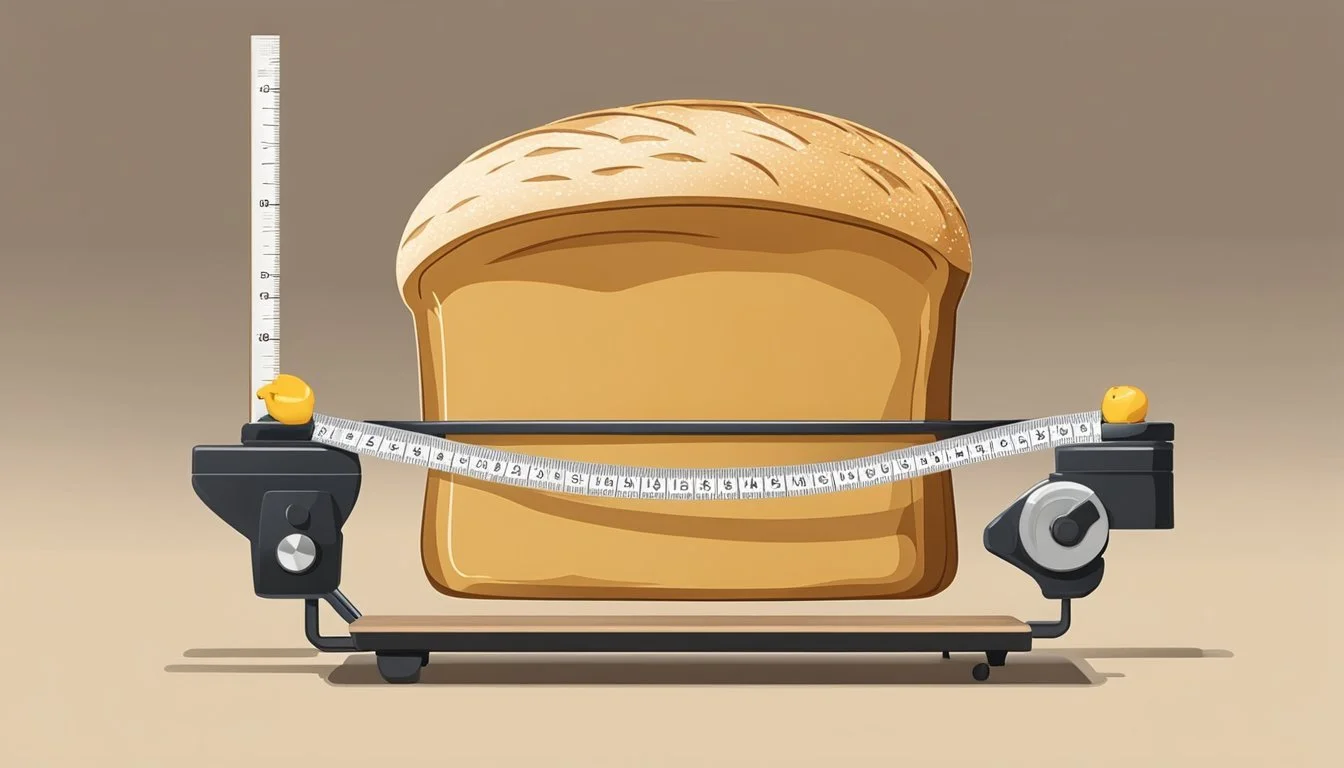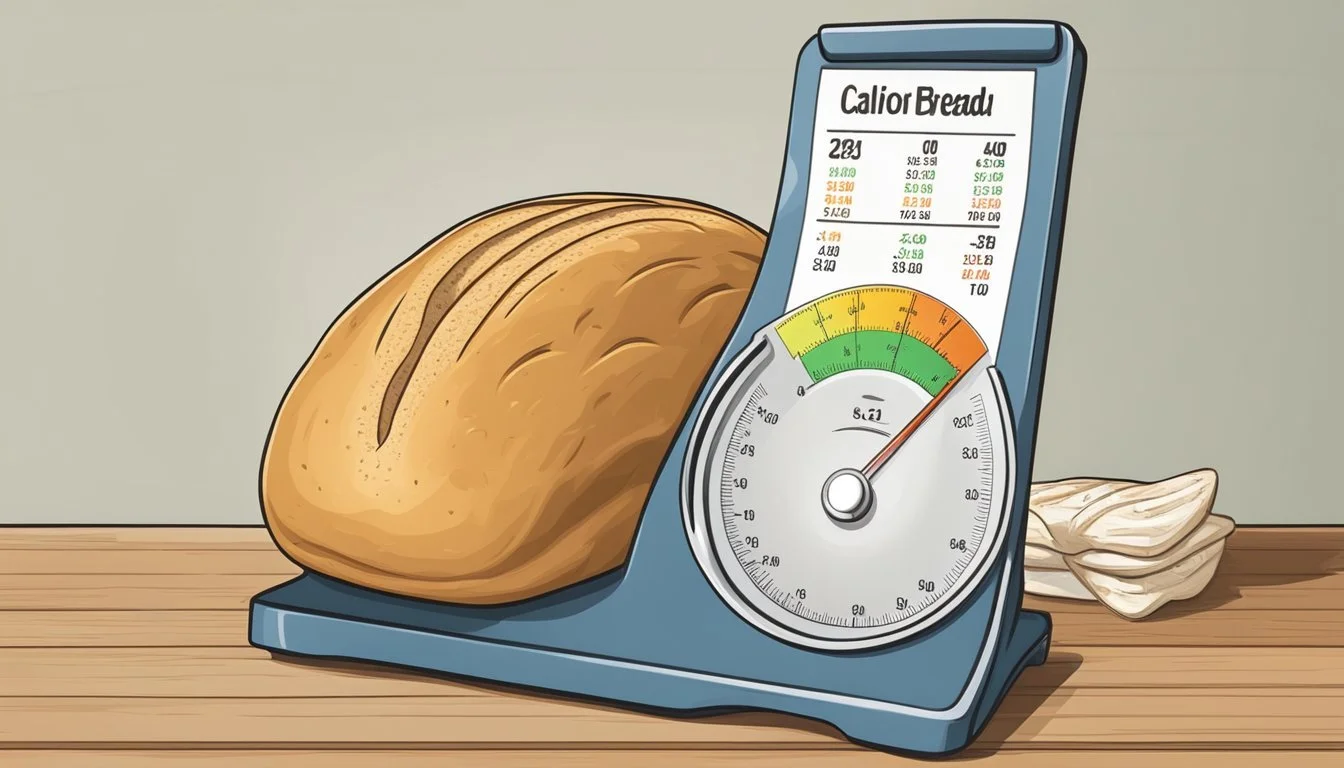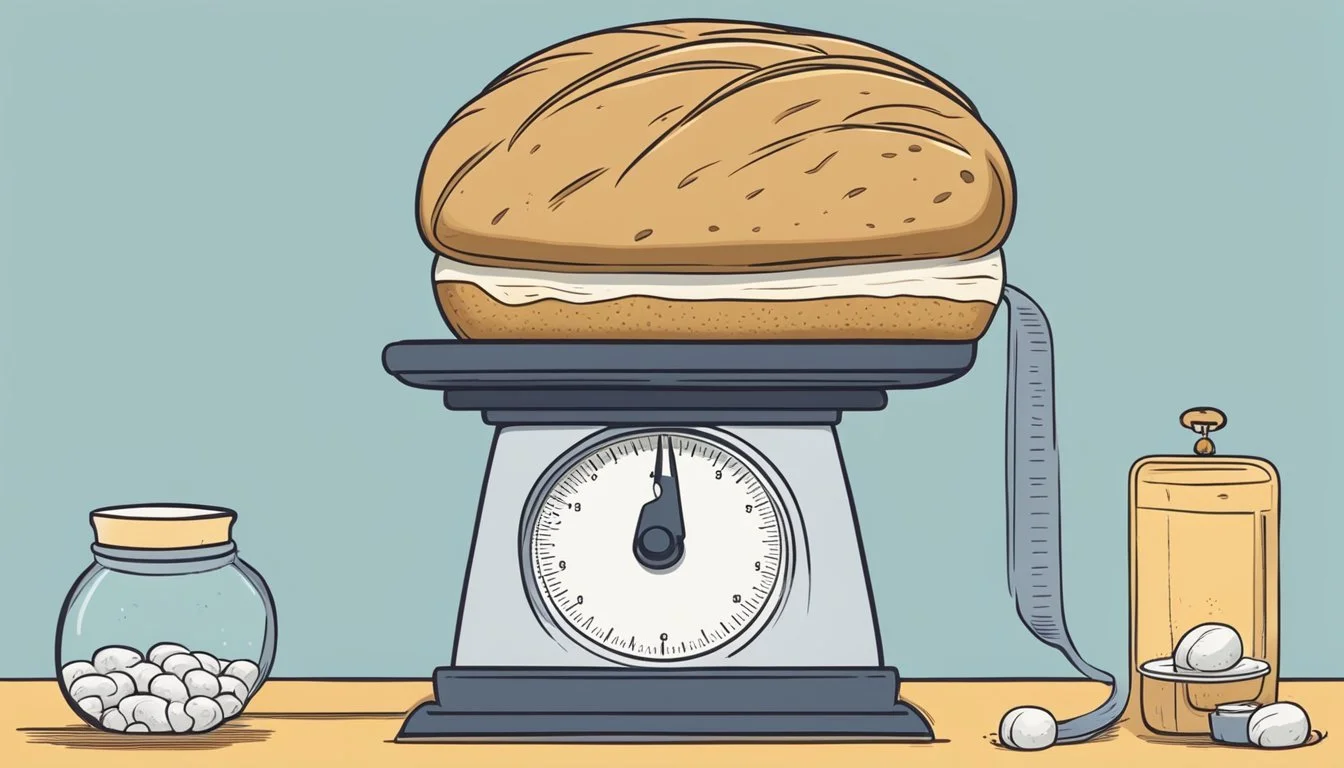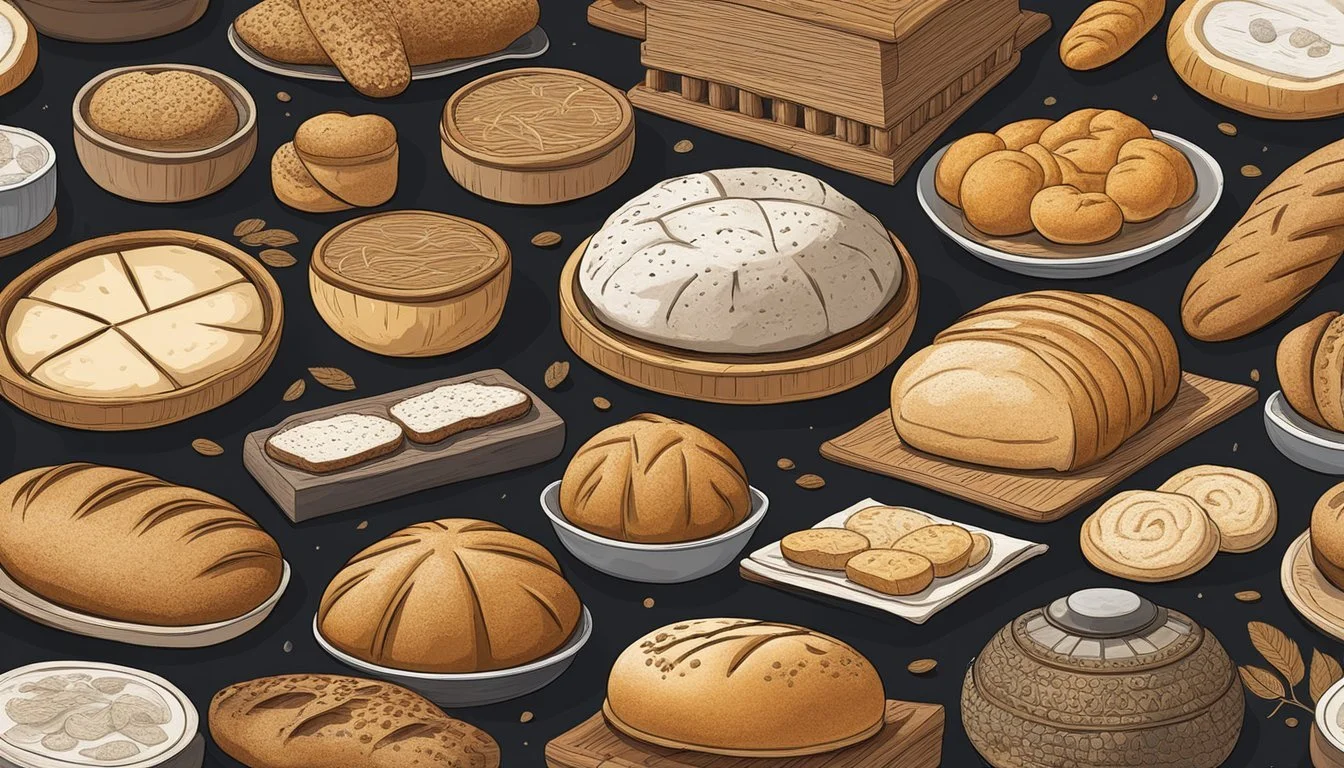Will Eating Bread Make You Gain Weight?
Unpacking the Facts on Bread and Weight Management
Eating bread has long been a subject of debate in the context of weight management and nutrition. While bread itself is a staple food in many diets around the world, misconceptions about its role in weight gain are common. It's important to understand that bread, like any other food, contains calories. Consuming more calories than the body uses can lead to weight gain, irrespective of the food source. Therefore, moderate consumption of bread, particularly when part of a balanced diet, is not inherently fattening.
The nutritional content of bread varies depending on the type. Whole grain and whole wheat varieties of bread provide fiber, vitamins, and minerals, which can be beneficial to health. Fiber, for instance, is known to help in feeling full, which can lead to a lower overall calorie intake. On the other hand, heavily processed breads, often stripped of these nutrients, might be less satiating, potentially contributing to overeating.
It is the excess consumption of calories — from bread or otherwise — that ultimately contributes to weight gain. Individuals can include bread in their diets without gaining weight by paying attention to portion sizes, choosing nutrient-dense varieties, and balancing their overall caloric intake with physical activity. Moderation, as with all aspects of a healthful diet, is key.
Understanding Calories and Weight Gain
Maintaining a healthy weight involves understanding the relationship between caloric intake and expenditure. This section examines the caloric content of bread, how calories affect body weight, and the role of different macronutrients.
Calories in Bread
Bread's caloric content can vary depending on the type. On average, a slice of white or whole wheat bread contains approximately 80 to 110 calories. Here is a breakdown of the typical caloric composition for a single slice of whole wheat bread:
Calories: 69.2
Carbohydrates: 11.6g
Fiber: 2g
Protein: 3.6g
Fat: Low amounts
Breads made with refined flour tend to be lower in fiber and nutrients compared to those made with whole grains.
Calories Balance and Weight Gain
Weight gain occurs when an individual consumes more calories than the body expends for energy. To gain weight, one must have a calorie surplus. Conversely, a calorie deficit is needed to lose weight. It takes an excess of approximately 3,500 calories to gain one pound of fat.
Role of Macronutrients
Macronutrients like carbs, protein, and fat are essential to a balanced diet. Each macronutrient plays a unique role:
Carbohydrates provide the body with energy. Excess carbs can be stored as fat.
Protein is crucial for muscle repair and growth. It also aids in satiety.
Fat is the most calorie-dense macronutrient and is important for hormone production and nutrient absorption.
Fiber, a type of carbohydrate, does not contribute to caloric intake in the same way as other carbs because it is not fully digestible. However, fiber is important for digestive health and can help with feeling full.
Understanding these factors is crucial for maintaining a healthy diet that includes bread while managing weight effectively.
Nutritional Composition of Bread
In understanding how bread can affect weight gain, one must consider its nutritional makeup, which varies widely across types. These variations in ingredients and processing methods influence the nutrients bread contains.
Different Types of Bread
There exist countless varieties of bread, each with unique nutritional profiles. White bread, made primarily from wheat flour, tends to have higher carbohydrate and sugar contents with lower levels of fiber. Whole wheat bread, in contrast, retains more natural fiber, vitamins, and minerals due to the inclusion of all parts of the grain—bran, germ, and endosperm.
White Bread (per slice, approx.):
Calories: 65
Fat: 0.75g
Carbohydrates: 12g
Fiber: 1g
Sugar: 2g
Protein: 2g
Whole Wheat Bread (per slice, approx.):
Calories: 70
Fat: 0.75g
Carbohydrates: 12g
Fiber: 2g
Sugar: 1.5g
Protein: 3g
Some breads may also include seeds, providing additional nutrients and benefits.
Whole Grain vs. Refined Flour
Whole grain breads include the entire grain — bran, germ, and endosperm — and are typically richer in fiber, vitamins such as B vitamins, and minerals like iron. Refined flour used in white bread has most of the bran and germ removed, which drastically reduces the bread's content of fiber and nutrients.
Whole Grain Bread:
More nutrients (B vitamins, iron, minerals)
Refined White Bread:
Lower in fiber
Less nutrient-dense
Gluten Content and Sensitivity
Gluten, a protein found in wheat and several other grains, gives bread its elasticity and chewy texture. While most people can digest gluten without issues, those with celiac disease or gluten sensitivity may experience adverse effects. Gluten-free breads are available for those who cannot tolerate gluten.
Gluten-containing bread (e.g., wheat bread)
May cause discomfort in individuals with gluten sensitivity or celiac disease
Gluten-free bread
Suitable for individuals with gluten-related disorders
Bread's Impact on Health
When examining the health implications of bread consumption, one must consider its influence on blood sugar levels, potential links to chronic conditions, and effects on digestive health. These factors vary greatly depending on the type of bread and individual health concerns.
Blood Sugar and Insulin Response
Bread, especially white bread made from refined grains, can cause rapid spikes in blood sugar levels due to its high glycemic index (GI). The body responds by releasing insulin to decrease these heightened levels. Frequent spikes may put strain on the body’s insulin-producing cells and potentially contribute to insulin resistance, a precursor for type 2 diabetes.
High-GI Breads: Rapid increase in blood sugar.
Low-GI Breads: Slower, more gradual increase.
Link to Chronic Conditions
There is evidence suggesting that a diet high in high-GI foods, like many breads, may be associated with an increased risk of chronic conditions such as heart disease and type 2 diabetes. The risk differs based on the type of bread consumed, with whole grains generally being considered a healthier choice than refined grains due to their lower GI and more beneficial nutrient content.
Whole Grains: Potentially lower risk of chronic conditions.
Refined Grains: Higher GI and potential risk factors.
Digestive System and Gut Health
Bread can have varying effects on the digestive system and gut health. Whole grain breads are higher in fibers and proteins, which can promote satiety and aid digestion. However, some individuals may experience bloating and gas due to the fermentable oligo-, di-, mono-saccharides and polyols (FODMAPs) present in wheat. Additionally, for those with sensitivities, gluten-free breads may help alleviate digestive discomfort and support a healthier gut environment.
Whole Grain Breads: Better for gut health and digestion.
Gluten Sensitivities: May require gluten-free bread options.
Diet and Lifestyle Factors
The impact of bread on weight hinges on its role within an individual's overall diet and lifestyle. Daily eating patterns, nutritional choices, and personal activity levels collectively play a more significant role in weight management than a single food item.
Inclusion in Balanced Diet
Incorporating bread as part of a balanced diet is compatible with weight maintenance and overall health. Whole grains found in many types of bread can be beneficial, providing essential nutrients like B vitamins, fiber, and minerals. A balanced diet should also include a variety of other foods such as fruits, vegetables, beans, nuts, and seeds to ensure a spectrum of nutrients.
Fiber in whole-grain bread: Helps feel full longer, aiding in portion control.
Healthy choices: Opt for whole-grain over refined bread to maximize nutritional benefits.
Weight Loss Strategies
For individuals pursuing weight loss, bread is not inherently problematic, but portion sizes and frequency of consumption should be monitored. Low-carb diets have gained popularity; however, the key is achieving a caloric deficit, which means consuming fewer calories than expended through physical activity. Healthy fats and proteins can help balance meals, leading to sustained satiety without overconsumption of breads or other carb-rich foods.
Caloric balance: Essential in losing weight, regardless of specific food items.
Combining food groups: Ensures a well-rounded meal, can reduce overreliance on bread.
Healthy Eating Habits
Healthy eating habits transcend food choices and encompass meal timing, food preparation, and listening to one's body. Preparing salad with nuts and seeds as an accompaniment to a sandwich can offer a more nutrient-dense meal. Including a variety of textures and flavors from whole foods like fruits and vegetables makes meals more satisfying and lessens the chances of feeling deprived.
Mindful eating: Paying attention to hunger and fullness cues prevents overeating.
Food preparation: Cook using methods that preserve or enhance nutritional value, avoiding added sugars or unhealthy fats.
Common Bread Alternatives
When looking to manage weight or adhere to certain dietary restrictions, consumers often seek out alternative options to traditional wheat bread. These alternatives may offer lower carbohydrate counts or provide different nutritional profiles that include increased protein or fiber.
Low-Carb and Gluten-Free Options
Gluten-free breads are a staple for those with celiac disease or gluten sensitivity. They are typically made from a blend of gluten-free flours such as rice or potato flour. Rice cakes or corn tortillas also serve as gluten-free alternatives to bread.
Lettuce wraps: A crisp and refreshing substitute for bread, lettuce can be used to wrap sandwiches or tacos.
Portobello mushrooms: These can be grilled and used as a stand-in for burger buns.
Almond flour bread: This bread is made with ground almonds and is both low-carb and gluten-free.
Protein and Fiber-Rich Alternatives
Protein and fiber are essential nutrients in any diet and can contribute to a feeling of fullness, which may be beneficial for weight management.
Egg wraps: Whisked eggs can be cooked into thin omelettes and used as a wrap for various fillings, providing a high-protein alternative.
Cauliflower pizza crust: Though not particularly high in protein, it does have more fiber compared to traditional crusts. This can be paired with nut butter for added protein and healthy fats.
Protein-rich bread alternatives may not always taste like traditional bread, but they typically offer more nutritional variety. For example, nuts and seeds can be included in homemade bread recipes to increase the nutrient profile, including healthy fats, calcium, and sometimes even vitamin D. Additionally, for those not averse to more unconventional options, a salad can sometimes take the place of a sandwich, offering an array of vitamins and nutrients while still satisfying the desire for a hearty meal.
Ingredients like eggs, milk, and nuts often feature prominently in recipes for bread substitutes, helping to enhance their nutritional content. While eggs contribute high-quality protein, milk can provide calcium, and nuts offer a dose of healthy fats and fiber.
Psychological Effects of Eating Bread
Eating bread can influence psychological well-being through its impact on cravings and hormonal balance. These effects are often tied to blood sugar levels and the types of bread consumed.
Cravings and Hormonal Impact
Cravings: The consumption of bread, particularly varieties high in refined carbohydrates, can lead to a quick increase in blood sugar levels. When blood sugar subsequently drops, it may result in cravings for more sugary or carbohydrate-dense foods to restore energy levels.
Refined Carbohydrates: Trigger rapid blood sugar spikes; associated with increased cravings.
Whole-Grain Bread: Generally cause a slower rise in blood sugar; may help moderate cravings.
Hormones: The body's hormonal response to bread consumption is closely linked to its glycemic index. Insulin, a hormone that is released in response to blood sugar, may surge after eating high-glycemic bread, potentially affecting mood and hunger.
Insulin: Involved in blood sugar regulation; high levels post-consumption can lead to mood swings.
Blood Sugar Fluctuations: Can influence the release of other hormones, like cortisol, which is associated with stress.
In summary, the type of bread and the body's response in managing blood sugar and hormonal levels are crucial in understanding the psychological effects of bread consumption.
Managing Bread Consumption
When integrating bread into one's diet, individuals should consider portion control, the frequency of bread consumption, and the choice of healthier toppings and spreads to maintain a balanced intake.
Portion Control and Frequency
One cannot neglect the importance of portion sizes when it comes to bread consumption. Larger portions, particularly of refined white bread, can be calorically dense, making portion control a critical factor in managing weight. For most adults, a suitable portion may range from one to two slices per sitting. It's also beneficial to be mindful of how often bread is consumed. For instance, having toast for breakfast should not be followed by a bread-heavy meal later in the day.
Selecting Healthier Toppings and Spreads
Toppings and spreads can significantly impact the nutritional value of a sandwich or piece of toast. Instead of butter or other high-fat spreads, one can opt for healthier alternatives like:
Peanut butter: A source of healthy fats and protein, but it's best used in moderation due to its calorie density.
Hummus: Delivers a flavorful punch along with good nutrition, including protein and fiber.
Listing the healthiest toppings:
Avocado, rich in healthy fats and fiber
Cottage cheese, a low-fat source of protein
Sliced turkey or chicken breast, which add lean protein to the meal
It's also worth considering the content of the sandwich besides the bread, ensuring a good balance of vegetables and lean protein, while limiting the use of processed meats and high-fat cheeses.
Associations with Common Diets
The role of bread in weight management is often scrutinized within the framework of various diet plans. Understanding its place in popular diets helps clarify the potential impacts on weight.
Bread in Popular Diets
Low-Carb Diets: Bread is typically reduced or eliminated in low-carb diets due to its high carbohydrate content. These diets, such as Keto and Atkins, suggest that limiting carbs is crucial for weight loss. For instance, they posit that consuming less bread can lead to a state of ketosis, where the body burns fat for energy.
Example of Low-Carb Diet Guidelines:
Keto Diet: Less than 50 grams of carbs per day
Atkins Diet: 20-100 grams of carbs per day, depending on the phase
High-Calorie Foods: While bread itself is not inherently high in calories, frequent consumption, especially of refined varieties, can contribute to a higher calorie intake. Diets focused on calorie control may recommend whole-grain options over white bread to provide more nutrients and fiber, which can aid satiety and help manage overall calorie intake.
Comparison of Caloric Content:
White Bread: Approximately 80-110 calories per slice
Whole-Grain Bread: Caloric content similar but with additional nutrients and fiber
General Diet Considerations: Most diets acknowledge the importance of balance and moderation. Whether one includes bread in their diet depends on individual calorie and carbohydrate goals. Diets like the Mediterranean diet incorporate bread as part of a diverse intake of foods, highlighting the significance of whole grains and their potential benefits when consumed in moderation.
Mediterranean Diet Approach: Includes whole-grain bread as part of a balanced diet, emphasizing moderation and nutrient-rich foods.
Cultural and Historical Significance
Throughout history, bread has held significant cultural importance, often symbolizing sustenance and community across various societies.
Bread in Different Cultures
Middle East: Often considered the birthplace of bread, the Middle East has cultivated wheat and produced bread for thousands of years. Flatbreads like pita are staples in the diet and are part of many traditional meals.
Europe: From the baguette in France to the dark rye breads of Eastern Europe, each culture has its distinct form of bread, deeply intertwined with its culinary heritage.
Asia: In countries like India, bread varieties such as naan and roti are intrinsic to the daily diet and are served with most meals, reflecting the region's agricultural practices focused on wheat and grain cultivation.
Africa: Injera, a sourdough flatbread made from teff flour, is central to Ethiopian and Eritrean cuisine, showcasing the continent's diverse grain use.
The Americas: Pre-Columbian civilizations baked flatbreads with maize, and today, cornbread is a classic dish in Southern United States cuisine, illustrating the blend of indigenous and European culinary traditions.
The presence of bread within these cultures not only provides a window into culinary practices but also reflects historical agriculture and trade developments that shaped societies. Itself a cornerstone of human development, bread remains deeply rooted in cultural identities worldwide.





